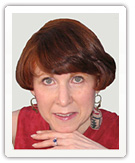e-Tips
More Multi-Generational Engagement & Communication Tips
Research by Kit Yarrow for her book, “Gen BuY: How Tweens, Teens and Twenty-Somethings are Revolutionizing Retail” provides some useful insights about how to achieve and maintain engagement with Gen Y/Millennials for professional development directors, marketers, recruiters, event planners, mentors, membership organizations and managers generally Yarrow is Professor of Psychology and Business at Golden State University in San Francisco.
Here are some tips from my interpretation of the advice to retailers:
- It’s no surprise by now that the younger generations want to be appreciated and understood. They want to be invited to give input and feel heard. They want meaningful exchanges. Customized products and services appeal to them. They are status-oriented, but assignments designed for them are even more appealing. Both generations X and Y like their own piece of the action and personal recognition.
To Do: Try engaging them and their talents through invitations to serve on committees, advisory boards and ambassador programs and invite their views in periodic online surveys. Don’t forget to share the results with them after inviting their participation. A bonus is that these roles build leadership experience early on.
- Innovative approaches attract their attention. They expect change and in general are more comfortable with it than the older generations who have vested interests to protect.
To Do: Stretch your creativity in marketing, event invitations and formats and recruiting messages. Make good use of technology, but it’s not just about tech tools. Interestingly, a Kaufman Foundation study discovered that older generations were more likely to innovate than their age 35 and younger counterparts, so be open to new approaches from all generations.
- Gen Yers like drama, personal connection and emotional intensity. Just look at the entertainment they gravitate to and the messages on Facebook.
To Do: Throw out any resistance to what Traditionalists and some Boomers put down as “touchy feely.” Tell stories with emotional connections and dramatic formats. Use the improvisation (theater games) techniques that older generations often shy away form because of inhibitions. The younger generations are often gutsier.
- They respond to visual stimuli and symbolism as we know from the explosion of the use of video and graphic representations. They have been educated in a world of profuse PowerPoint usage and YouTube. And they also relate to stories and metaphors.
To Do: Use stories to make educational points and cut down the verbiage in messages. Be sure to make the stories relevant, avoiding frequent telling of old war stories, “in the day,” and “when I started my career….” Try relating educational information they need to have to current events that matter to them.
- Use of technology from a young age has primed Gen Yers to want and expect faster processes, immediate responses, and elimination of boring detail and intermediate steps. They want an app for everything to short-cut time spent on tasks so they can have more time for things they want to do in their personal lives.
To Do: Design training and other messages in a series of short bites with quick feedback, quizzes, contests, and personal involvement. However, efficient ways of doing things are not always the most effective. Demonstrate that electronic means are not always the best for accomplishing the objective and when to use which communication or research method.
I think these tips are a good summary or refresher of how we need to work together in today’s environment and into the future. Am I suggesting that the older generations should abandon their methods and like it or not adopt all the approaches and tools the Gen Yers know and gravitate to? Absolutely not. Working together in any diverse situation is a matter of give and take, finding what works best to reach the goals and tasks at hand.
These tips apply to all the generations in the workplace because at various times we communicate and work with people who are of different generations, and all are influenced to a greater or lesser extent by similar cultural, economic, and social factors. The only way to achieve long-term high performance and career satisfaction is through inter-generational dialogue and openness of all parties to consider and embrace something new.
As always, I am eager for your stories, thoughts, opinions, feedback, questions and rants. Email to pwhaserot@pdcounsel.com or comment on my blog: www.nextgeneration-nextdestination.com.
Phyllis
© Phyllis Weiss Haserot, 2010. All rights reserved.
* The generational chronology for easy reference: Generations are defined by the similar formative influences – social, cultural, political, economic – that existed as the individuals of particular birth cohorts were growing up. Given that premise, the age breakdowns for each of the four generations currently in the workplace are approximately:
Traditionalists: born 1925-1942
Baby Boomers born 1943-1962
Generation X born 1963-1978
Generation Y/Millennials born 1979-1998

